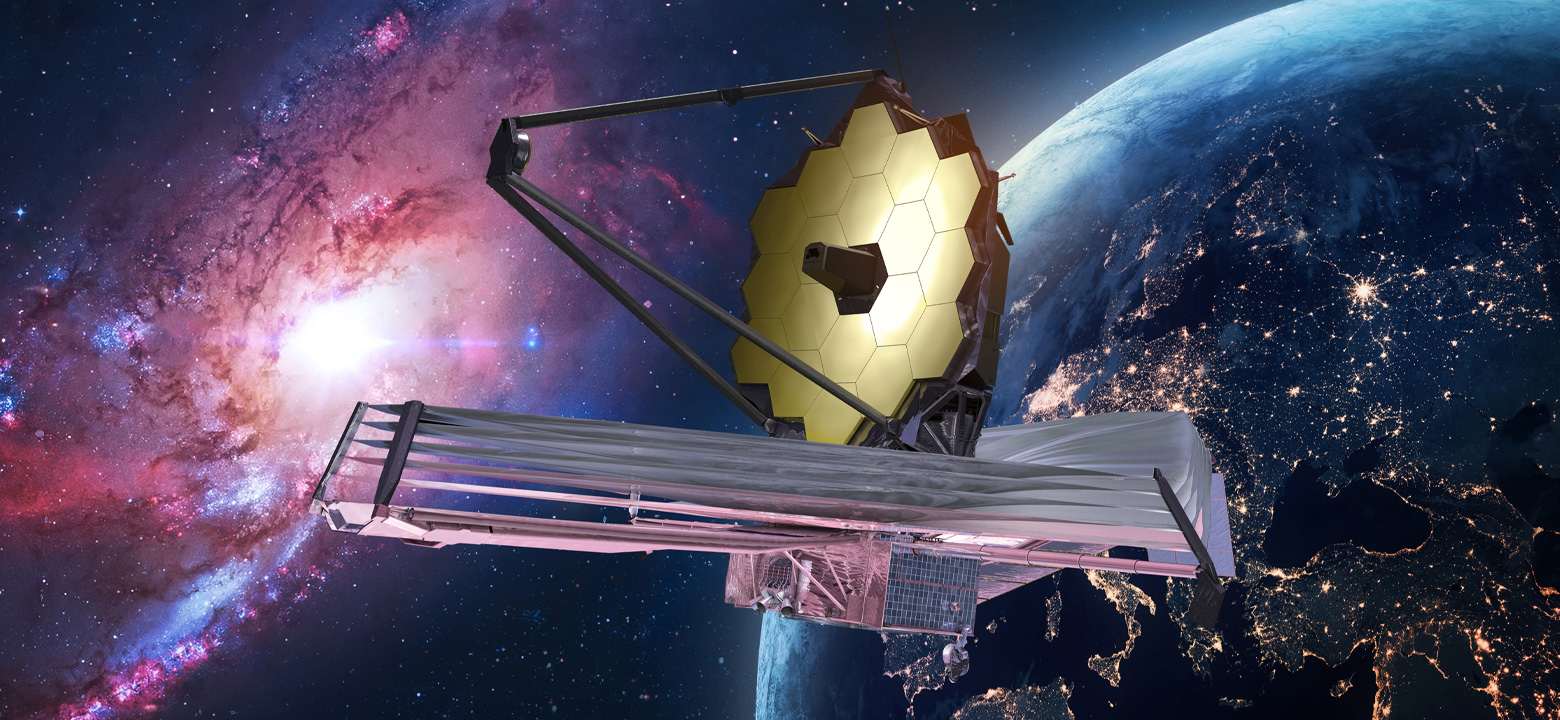
The Webb telescope has given us some highly detailed, profoundly beautiful images of space. Where the Hubble telescope offered the world pictures that revolutionized our thinking about space and astrophotography. The Webb telescope is capable of everything that Hubble is, and much more—its pictures are clearer, brighter, and much more detailed. How do the Hubble and the Webb differ, and what new information can Webb offer us?
A telescope's primary mirror is what allows it to capture image data. While the Hubble telescope has a primary mirror of about 2.4 meters, giving it a collection area of 4.5 square meters, the Webb telescope has a collection area about 6.25 times larger. This means that the Webb telescope can produce images with a much higher resolution.
In addition to having a larger collection area, Webb also differs from Hubble in the wavelengths it observes. Webb has four different instruments that can capture data from wavelengths between 0.6 to 28 micrometers, which means that they pick up the infrared spectrum. While the Hubble telescope can pick up a small portion of the infrared spectrum, its instruments are primarily dedicated to working with visible and ultra-violet light, which are shorter wavelengths.
The ability to pick up infrared energy is very important to astrophotography. Many of the phenomena that scientists want to capture, like newborn stars, are often concealed behind debris that blocks visible light. The Webb telescope can detect non-visible infrared energy, creating images despite visibility-blocking obstacles.
Hubble orbits the Earth at a distance of about 570 kilometers above the surface. Webb, by contrast, doesn't orbit us at all—it's actually at the Earth-Sun L2 Lagrange point, or about 1.5 million kilometers away. Lagrange points are positions in space where objects tend to kind of sit. Because of the way gravity works, the pull of two large masses at a Lagrange point is equivalent to the centripetal force required to move a small object. This means that the Webb telescope doesn't really need to do much to correct its orbit, since the gravitational pull of the Earth and Sun will keep it in place.
Since light takes some time to travel, you're never actually “seeing” an object in the present—you're seeing light reflected from that object at a point in the past. The difference is negligible when you're talking about close objects, but, when it comes to the far reaches of space, that difference grows with distance. While it's an oversimplification, some people joke that, if aliens 65 million light years away were to look at Earth, they'd be seeing dinosaurs.
Hubble isn't able to see as far as Webb can. This means that, while Hubble can see young galaxies, Webb is capable of seeing even younger ones.
This is where Webb's infrared capabilities come into play. As the universe expands, objects move farther away from each other. As the distance between them stretches, light in that space stretches and lengthens with it. This means that the farthest objects aren't observable via visible light, only as infrared energy. Webb can spot these very far objects.
It takes a lot of time and data to create a picture out of infrared and ultraviolet energy. Since humans don't perceive these visually, Webb and Hubble both have to take this information, usually in small portions, and composite it together into a visual representation of the objects they're photographing. Some of Webb's pictures are made up of nearly 1,000 separate image files, assembled like a jigsaw puzzle.
While Hubble can take weeks to create a composite image. Webb, however, can create a higher-quality image in about half a day.
While many people look at the pictures sent back by the Webb telescope and assume that it's superior to Hubble, the truth is that they do different things. NASA plans on continuing to use both, since they're both geared to capture different “slices” of the electromagnetic spectrum. Webb isn't really a new and improved version of Hubble, it's more like a successor. Working in tandem, they can provide us with incredible views of the universe.